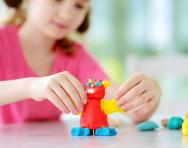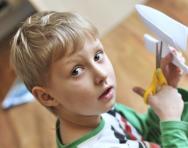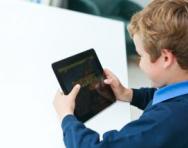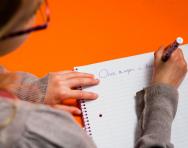Film-making and animation fun for children

By the time they reach Key Stage 3, lots of children will be extremely reluctant to undertake anything that is remotely connected to school. Overcome this problem by offering an opportunity to try out something new: try encouraging your child’s storytelling skills through scriptwriting and film.
Activity 1: Making your own film
Shooting a short film sounds, and is, exciting – most of us have access to cameras or camera phones and home computers, so all you need to get started is a creative vision! Ideally the film should be no more than three to five minutes long. Although this doesn’t seem much, it’s a long time when you are preparing scripts, making films and editing them.
Remember that not all camera shots will be used! Depending on your child’s interests the film could be either factual or story based and can be done individually or within a group.

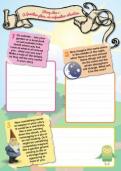
Download a FREE Creative Writing toolkit!
- KS1 & KS2 workbooks
- Bursting with fill-in prompt sheets and inspiring ideas
- Story structure tips, style guides and editing suggestions
Research: Look up sites such as British Film Institute and Movieum to research how films are made. Begin with a discussion about themes – what is the film going to be about? If your child is stuck for ideas, why not suggest turning a scene from one of their favourite novels into a film? This requires reading the book and deciding which the key scenes are. It might help to watch a well-known film, such as one in the Harry Potter series, and see which scenes were left out.
Shooting the film: Once the theme of the film has been decided, it’s essential to work out the script. This can be done by writing a screenplay and drawing simple storyboards to show what type of pictures are required to match the script. If the script is story based, then there may be a need for costumes to be created, and lines learned. A factual film will require specific settings to be organised – this may involve trips out to find locations. Speaking to camera during filming is an important oral technique for children to learn, helping them to develop confidence when speaking in public.
Once the filming is complete, it will need to be downloaded onto a computer. With the aid of video editing software for desktop computers or apps on phones, the child can learn to edit the material, deciding what to use and which to reject so as to create a coherent programme.
Activity 2: Creating an animation
If a child is working on their own doing a film, they may need assistance from a parent to complete the actual filming. Undertaking an animation project can be one way of overcoming this problem!
There are three main types of animation. The traditional methods are drawn animation (where the story is told through a series of animated drawings, such as in Japanese anime films) and model making (where the models have to manually move slightly for each new frame, as in Wallace & Gromit). The most recently developed method is computer generation. Whichever type is chosen, the key literacy skills remain the same – creative script development, presentation and learning how to edit material.
Great places to try out animation skills for free include FluxTime Studio and Zimmer Twins.

Give your child a headstart
- FREE articles & expert information
- FREE resources & activities
- FREE homework help
